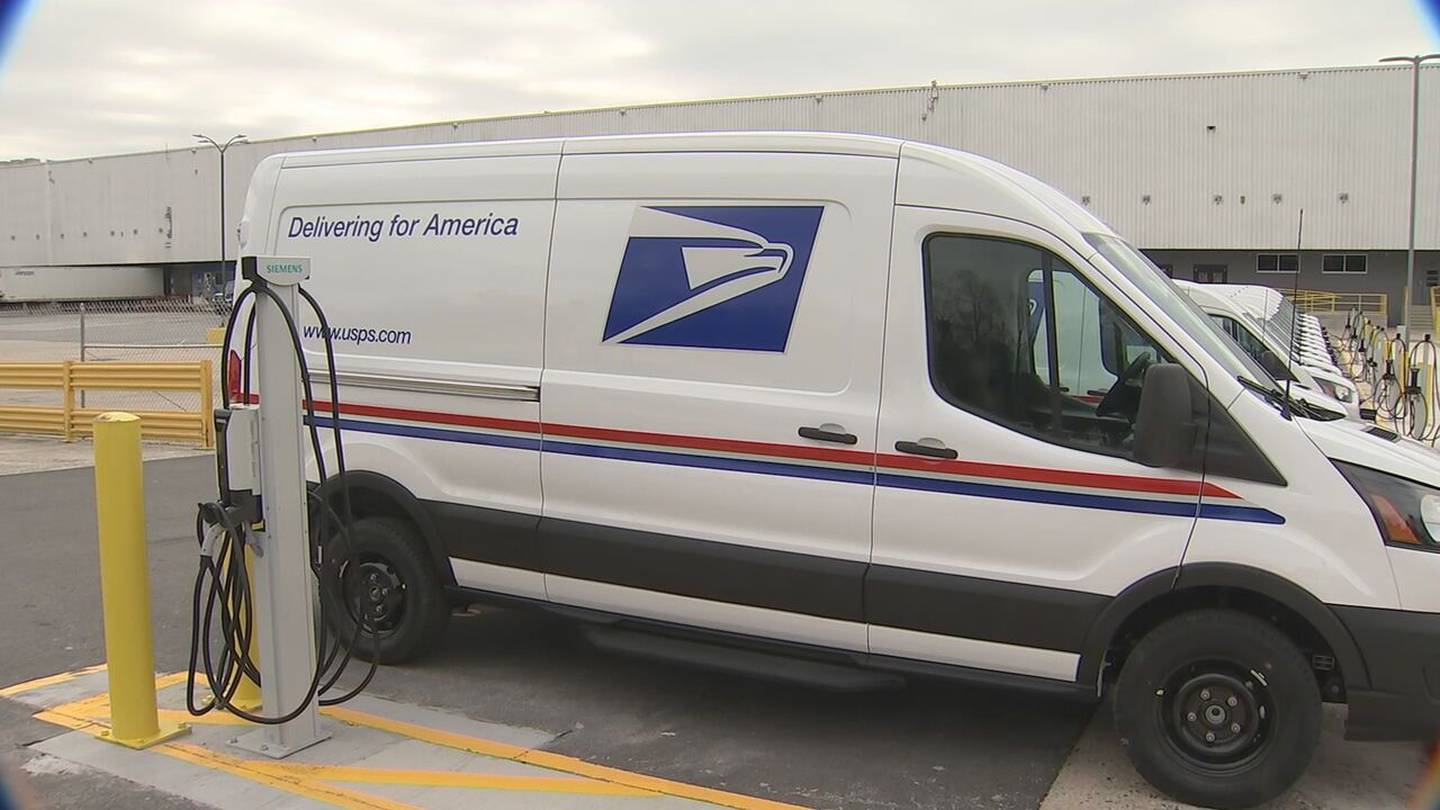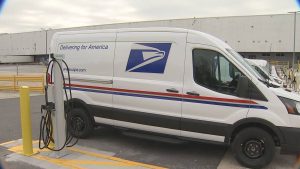




2 March 2023

The U.S. Postal Service’s plans for a nationwide fleet of electric vehicles are getting closer to being realized. The service awarded contracts on Tuesday for 9,250 battery electric vehicles and for more than 14,000 charging stations.
The vehicles purchased are Ford E-Transit Battery Electric Vehicles (BEVs), which according to USPS are “100 percent electric.” It’s part of the agency’s plans, announced in December, to make 75% of its newly acquired vehicles, known as Next Generation Delivery Vehicles, over the next five years electric. After 2026, NGDV purchases will be 100% electric, the agency said.
The goal is to have a fleet of 66,000 electric vehicles deployed by 2028.
Three suppliers were awarded contracts for more than 14,000 charging stations, as well, USPS said, to kick off its Electric Vehicle Supply Equipment (EVSE) inventory.
However, the agency did note that the contracts they just awarded will not provide an immediate supply. The vehicles won’t be delivered until December, assuming that the agency successfully finishes its Supplemental Environmental Impact Statement and other necessary tasks. It also remains unclear where the vehicles and charging stations will be placed, as those details have yet to be finalized, the agency said.
As such, a contract has also been awarded for the agency to acquire 9,250 commercial-off-the-shelf internal combustion engine vehicles “to fill the urgent need for vehicles.” In December, the agency said that 21,000 COTS vehicles will be purchased and are “expected to be battery electric,” but said that depends “on market availability and operational feasibility.”
In this case, the internal combustion engine vehicles will be gas-powered and made by Fiat Chrysler Automobile, a spokesperson for USPS told CBS News. They added that, unlike older USPS vehicles, these will “feature air conditioning and advanced safety technology and are more suited to modern day operational requirements.”
“We have an urgent need to replace some of our vehicles as soon as possible, and in those instances we will look to obtain vehicles that can be provided to us expeditiously, recognizing that there are a limited amount of BEV options currently available and that the charging infrastructure buildout will also take some time,” they said in an email.
“…Today there remain routes and applications which do not support BEVs. As BEV technology matures and capabilities increase, the Postal Service will continue to review its ability to utilize and expand BEV usage.”
Postmaster General Louis DeJoy said nevertheless, the plans will reduce the costs of the agency while improving their revenue, working conditions and service.
“Electrification of our vehicle fleet is now an important component of these initiatives,” DeJoy said. “We have developed a strategy that mitigates both cost and risk of deployment – which enable execution on this initiative to begin now.”
The postal service’s drive toward clean energy vehicles is only a recent development that came after it received significant backlash over plans to replace its fleet with mostly gas-powered vehicles. Those initial plans were announced after President Joe Biden signed an executive orderat the start of his presidency saying all federal vehicles would have to be zero-emission by 2035.
As part of its original plans, the USPS said it was going to purchase 50,000 to 165,000 new vehicles, with “at least” 10% being battery electric-powered. But within a few months, more than a dozen states and numerous environmental groups sued the agency, accusing it of improperly analyzing the environmental toll of such an action and ignoring scientists’ concerns.
By June last year, USPS said that it could potentially expand its plans for EV purchases. By December, they did.
“The Postal Service has been steadfastly committed to the fiscally responsible and mission capable roll-out of electric-powered vehicles for America’s largest and oldest federal fleet,” the agency said on Tuesday.